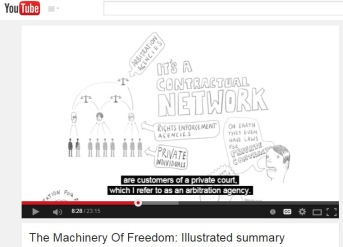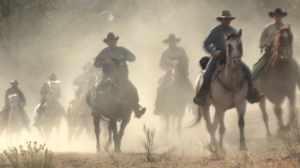Before you can even begin to be taken seriously when demanding people change their behavior to ‘save the planet’ from climate change, you have to do 4 things:
1. prove the climate actually is changing and doing so in an unnatural fashion.
This means you have to rule out things like the influence of the sun or other cosmic influences, natural phenomenon, long-term cycles, etc.
While there is considerable evidence out there that there are changes in specific environments, localized settings and even regional scale alterations from recorded, past events, changes occur in the climate all the time. Proof of ‘a’ change is not proof of cause and effect.

Disregarding the amount of ‘tinkering’ with the data and political manipulation of the so-called facts, biased sampling and reporting, agenda driven (pseudo) science and other questionable contributions to the climate debate, it is still necessary to not only prove there is a change occurring but it is necessary to draw a direct, undeniable, peer-reviewable, incontrovertible ‘change’ that is not simply one of many changes the earth has and will continue to experience over it’s lifetime.

expanding sea ice
Before you can even proceed to the next step, this step has to have been achieved satisfactorily, withstood scrutiny, not been explainable through other means, and so forth. Some would argue this step has been achieved while others say there is considerable evidence that it far from established. But before any other considerations are even relevant, the proof of ‘a change’ that is ‘not natural’ must be achieved.
If and only if such satisfactory proof of such an unprecedented change is occurring, then you still have three more conditions that need to be met before you can suggest any drastic change in behavior.
2. prove the changes are going to be predominantly ‘bad’.
Even if you ‘can’ and ‘have’ proved a change is happening, it is still necessary to prove that the sum of ‘bad’ things resulting from the changes outweighs the sum of ‘good’ things that may result. In other words, even if you can prove that your particular computer model which predicts an increase in temperature is going to be the first one that is right about such a prediction, you still need to prove that the increase in temperature you are predicting is going to cause more harm than good. Even if you can establish without question that sea levels will rise, you have to also establish that the net result of such a rise is going to cause more problems than it creates opportunities. Even if you can show inevitable changes in weather, you have to also show that such changes in weather will degrade conditions more than they improve them.
If the end result of any alleged change is going to be more positive than negative, suggesting any alteration to that change is absurd. Once again, before you can proceed any further, you must establish the ‘net sum’ as negative before making any suggestions.
3. prove humans are the cause or at least a key cause of the problem.
One of the key premises of ‘climate change’ dating back more than a century through ‘cooling’, ‘warming’, ‘cooling’ and the current on-going ‘warming’ scares, the key factor in all of these environmental discussions has been the alleged involvement of mankind and the effects of human behavior. If you are suggesting human behavior is a key ’cause’ and that [drastic] changes in human behavior are ‘necessary’ to prevent further problems, then you have to make the case that humans are actually causing the problem or at least making a significant contribution to making it a problem in the first place.
One example is the continued hysteria over CO2. While it is true that you can show empirically that CO2 concentrations in test samples have increased by 100ppm from 300ppm to 400ppm, you have to then establish that this measured increase is one of the key factors in the changes you allege are coming. The reality is that 100ppm stands for one hundred parts per million. For those who are math challenged, that amounts to 0.01% of the atmosphere as a whole. Furthermore, most of the data used to create that number represents air masses around human population and is arrived at through samples taken at ground level. In fact, when you sample further away from population centers, the numbers go down — the further away, the further they drop. Why? Trees! Grasses! Green stuff. Still more, if you take samples higher in the atmosphere, the concentrations are not nearly as high. Why? CO2 is heavier than the bulk of gases in the atmosphere, thus is settles in higher concentrations near ground level. (near all those trees and grasses and green stuffs) But the greenhouse effect requires the entire atmosphere to produce the effects alleged by greenhouse-related AGCC theories.

Measurements in Colorado — CO2 levels at different altitudes
So the premise of ‘man’ contributing to any alleged problem must be established to support any solution that involves a change in the behavior of man. And once again, this must be established before you proceed any further.
4. prove whatever change you are suggesting will not only help prevent, fix or otherwise solve the ‘bad’ problems in #2 but will not ’cause’ still more bad problems and is better than any alternative approaches.
There was some guy that posted a scare-tactic video labelled melodramatically, “The Most Terrifying Video You’ll Ever See” on YouTube. I regret having to link to it now, but it is essentially a stereotypical pseudo-science, pseudo-logic, purely emotional example of the kind of hype involved in this entire debate. He shows what he alleges to be a ‘logic diagram’ of the potential consequences of action vs inaction against the two scenarios of doing something and doing nothing. Yet his so-called ‘unquestionable logic’ completely disregards the consequences of draconian changes upon the ability of individuals and societies to actually ‘cope’ with the outcomes of either scenario which results from something AND nothing happening.
In other words, given his scenario of doing absolutely nothing, society and life go on as normal. Technology continues to advance, people still go about their lives, science still does its thing. Economies still function without interference, industry continues to grow, inventions continue to be made and brought to market. In short, human progress moves on.
Meanwhile, his premise for ‘doing something’ assumes doing something drastic. Under the drastic scenario, we must assume that certain advances are restricted, people’s lives are regulated, science is limited. Economies are interfered with, industry is put on a short leash, inventions are now gauged by their potential contribution to the global-climate-change before being allowed in the market. In short, human progress is slowed or halted all together.
Under either contrasted scenario of climate change being real or being a bunch of chicken little fear-mongering, the resulting society in the do-something, drastic-change scenario is crippled and working at a reduced, limited, restrained or otherwise hyper-regulated capacity. Innovations are stifled and subject to a central planning filter. Potential solutions are not up to the society as a whole, but up to the green-police. And the means to arrive at those solutions is not enhanced by a robust economy with access to all available resources, but limited by a restricted and hyper-regulated one.
Thus if you have managed to establish the first three points with reasonable certainty, you are still under the requirement of showing that any changes you suggest to fix the problem, actually fix the problem!
So ask yourself…
All of these 4 points are not politically biased (even if some of my intervening comments reflect my own views on the subject). They are basic critical thinking 101. Whether you support AGCC theory or oppose it, the four points by themselves have merit. The requirements of the four points are not extreme and are not unreasonable. So before you pick a side — or if you have taken a side, before you move to act — stop and ask yourself:
“Have these four conditions been met?”
It should be no mystery to anyone that my conclusion is a big, fat NO.
(watch for another post in the future on this subject about water’s role in ‘global cooling’, likely to be called ‘Four More Things on global climate change’)
 think up an ideal* that is ultimately unprovable, inconceivable, inexplicable, irreproachable and non-corporeal in nature (e.g. a “God”, the ‘common good’, the ‘State’, the ‘environment’, animal “rights”, EDIT: fighting a disease)
think up an ideal* that is ultimately unprovable, inconceivable, inexplicable, irreproachable and non-corporeal in nature (e.g. a “God”, the ‘common good’, the ‘State’, the ‘environment’, animal “rights”, EDIT: fighting a disease)









 The version of the
The version of the  The first part before the comma is what is referred to as a
The first part before the comma is what is referred to as a









